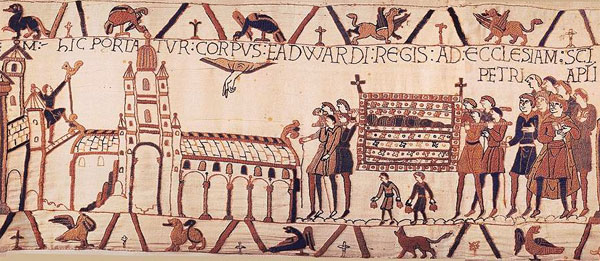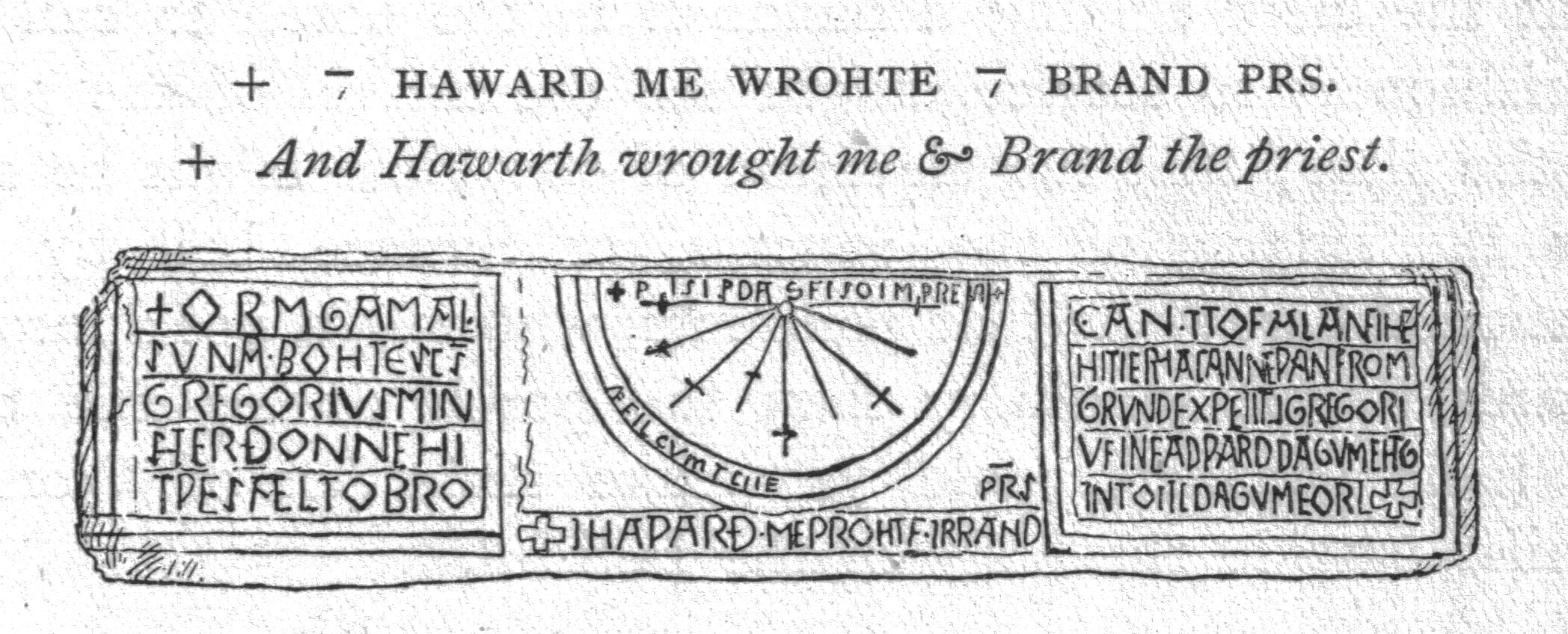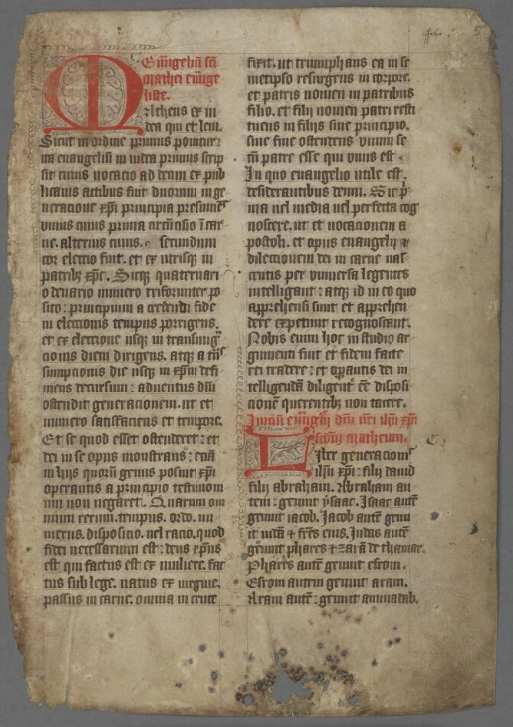|
Cynesige
Cynesige (died 22 December 1060) was a medieval English Archbishop of York between 1051 and 1060. Prior to his appointment to York, he was a royal clerk and perhaps a monk at Peterborough.William Henry Dixon. ''Fasti Eboracenses: Lives of the Archbishops of York, Volume 1'', p. 137. Longman, Green, Longman, and Roberts, 1863. As archbishop, he built and adorned his cathedral as well as other churches, and was active in consecrating bishops. After his death in 1060, the bequests he had made to a monastery were confiscated by the queen. Life Cynesige perhaps came from Rutland, as he owned the manor of Tinwell there later in life.Cooper "Cynesige" ''Oxford Dictionary of National Biography'' The ''Liber Eliensis'' claimed that he had been born by Caesarian section, but this is most likely a later accretion to his lifestory, added after his death because of efforts to have him declared a saint. The belief was that for an infant to survive a caesarian section was a miracle, and t ... [...More Info...] [...Related Items...] OR: [Wikipedia] [Google] [Baidu] |
Ealdred (archbishop Of York)
Ealdred (or Aldred; died 11 September 1069) was Abbot of Tavistock, Bishop of Worcester, and Archbishop of York in early medieval England. He was related to a number of other ecclesiastics of the period. After becoming a monk at the monastery at Winchester, he was appointed Abbot of Tavistock Abbey in around 1027. In 1046 he was named to the Bishopric of Worcester. Ealdred, besides his episcopal duties, served Edward the Confessor, the King of England, as a diplomat and as a military leader. He worked to bring one of the king's relatives, Edward the Exile, back to England from Hungary to secure an heir for the childless king. In 1058 he undertook a pilgrimage to Jerusalem, the first bishop from England to do so.Barlow ''Edward the Confessor'' pp. 208–209 As administrator of the Diocese of Hereford, he was involved in fighting against the Welsh, suffering two defeats at the hands of raiders before securing a settlement with Gruffydd ap Llywelyn, a Welsh ruler. In 1060, Eald ... [...More Info...] [...Related Items...] OR: [Wikipedia] [Google] [Baidu] |
Ælfric Puttoc
Ælfric Puttoc. Sometimes modernised as Alfric Puttock. (died 22 January 1051) was Archbishop of York from 1023 to his death, and briefly Bishop of Worcester from 1040 to 1041. He may have crowned Harold Harefoot in 1036, and certainly assisted in that king's disinterment in 1040 and at the coronation of Edward the Confessor in 1043. He founded houses of canons and encouraged the cult of John of Beverley. Early career Ælfric first appears in the historical record as the provost of New Minster, Winchester.Hunt "Ælfric" ''Oxford Dictionary of National Biography'' He was probably a native of Wessex.Cooper ''Last Four Anglo-Saxon Archbishops'' p. 14 He became Archbishop of York in 1023,Fryde ''Handbook of British Chronology'' p. 224 but did not hold the see of Worcester at the same time, which had been traditional for a number of years. He was consecrated by Æthelnoth, the Archbishop of Canterbury. Ælfric travelled to Rome in 1026 to receive his pallium from Pope John X ... [...More Info...] [...Related Items...] OR: [Wikipedia] [Google] [Baidu] |
Bishop Of Glasgow
The Archbishop of Glasgow is an archiepiscopal title that takes its name after the city of Glasgow in Scotland. The position and title were abolished by the Church of Scotland in 1689; and, in the Scottish Episcopal Church, it is now part of the Episcopal bishopric of Glasgow and Galloway. In the Roman Catholic Church, the title was restored by Pope Leo XIII in 1878. The present Archbishop is William Nolan, who was installed on 26 February 2022. History The Diocese of Glasgow originates in the period of the reign of David I, Prince of the Cumbrians, but the earliest attested bishops come from the 11th century, appointees of the Archbishop of York. The episcopal seat was located at Glasgow Cathedral. In 1492, the diocese was elevated to an archdiocese by Pope Innocent VIII. After the Scottish church broke its links with Rome in 1560, the archbishopric continued under the independent Scottish church until 1689 when Episcopacy in the established Church of Scotland was finally ... [...More Info...] [...Related Items...] OR: [Wikipedia] [Google] [Baidu] |
Archbishop Of York
The archbishop of York is a senior bishop in the Church of England, second only to the archbishop of Canterbury. The archbishop is the diocesan bishop of the Diocese of York and the metropolitan bishop of the province of York, which covers the northern regions of England (north of the Trent) as well as the Isle of Man. The archbishop's throne ('' cathedra'') is in York Minster in central York and the official residence is Bishopthorpe Palace in the village of Bishopthorpe outside York. The current archbishop is Stephen Cottrell, since the confirmation of his election on 9 July 2020. History Roman There was a bishop in Eboracum (Roman York) from very early times; during the Middle Ages, it was thought to have been one of the dioceses established by the legendary King Lucius. Bishops of York are known to have been present at the councils of Arles (Eborius) and Nicaea (unnamed). However, this early Christian community was later destroyed by the pagan Anglo-Saxons and ... [...More Info...] [...Related Items...] OR: [Wikipedia] [Google] [Baidu] |
Peterborough Cathedral
Peterborough Cathedral, properly the Cathedral Church of St Peter, St Paul and St Andrew – also known as Saint Peter's Cathedral in the United Kingdom – is the seat of the Church of England, Anglican Bishop of Peterborough, dedicated to Saint Peter, Paul of Tarsus, Saint Paul and Saint Andrew, whose statues look down from the three high gables of the famous West Front. Although it was founded in the History of Anglo-Saxon England, Anglo-Saxon period, its architecture is mainly Norman architecture, Norman, following a rebuilding in the 12th century. With Durham Cathedral, Durham and Ely Cathedral, Ely cathedrals, it is one of the most important 12th-century buildings in England to have remained largely intact, despite extensions and restoration. Peterborough Cathedral is known for its imposing English Gothic architecture, Early English Gothic West Front (façade) which, with its three enormous arches, is without architectural precedent and with no direct successor. The appeara ... [...More Info...] [...Related Items...] OR: [Wikipedia] [Google] [Baidu] |
Peterborough Abbey
Peterborough Cathedral, properly the Cathedral Church of St Peter, St Paul and St Andrew – also known as Saint Peter's Cathedral in the United Kingdom – is the seat of the Anglican Bishop of Peterborough, dedicated to Saint Peter, Saint Paul and Saint Andrew, whose statues look down from the three high gables of the famous West Front. Although it was founded in the Anglo-Saxon period, its architecture is mainly Norman, following a rebuilding in the 12th century. With Durham and Ely cathedrals, it is one of the most important 12th-century buildings in England to have remained largely intact, despite extensions and restoration. Peterborough Cathedral is known for its imposing Early English Gothic West Front (façade) which, with its three enormous arches, is without architectural precedent and with no direct successor. The appearance is slightly asymmetrical, as one of the two towers that rise from behind the façade was never completed (the tower on the right as one faces th ... [...More Info...] [...Related Items...] OR: [Wikipedia] [Google] [Baidu] |
Malcolm III Of Scotland
Malcolm III ( mga, Máel Coluim mac Donnchada, label=Medieval Gaelic; gd, Maol Chaluim mac Dhonnchaidh; died 13 November 1093) was King of Scotland from 1058 to 1093. He was later nicknamed "Canmore" ("ceann mòr", Gaelic, literally "big head"; Gaelic meaning and understood as "great chief"). Malcolm's long reign of 35 years preceded the beginning of the Scoto-Norman age. Henry I of England and Eustace III of Boulogne were his sons-in-law, making him the maternal grandfather of Empress Matilda, William Adelin and Matilda of Boulogne. All three of them were prominent in English politics during the 12th century. Malcolm's kingdom did not extend over the full territory of modern Scotland: many of the islands and the land north of the River Oykel were Scandinavian, and south of the Firth of Forth there were numerous independent or semi-independent realms, including the kingdom of Strathclyde and Bamburgh, and it is not certain what if any power the Scots exerted there on Malcolm' ... [...More Info...] [...Related Items...] OR: [Wikipedia] [Google] [Baidu] |
Bishop Of Durham
The Bishop of Durham is the Anglican bishop responsible for the Diocese of Durham in the Province of York. The diocese is one of the oldest in England and its bishop is a member of the House of Lords. Paul Butler has been the Bishop of Durham since his election was confirmed at York Minster on 20 January 2014.Archbishop of York – Bishop of Durham Election Confirmed (Accessed 20 January 2014) The previous bishop was , now Archbishop of Canterbury. The bishop is one of two (the other is the |
Æthelwine (bishop Of Durham)
Æthelwine, also Aethelwine or Ethelwine is an Anglo-Saxon given name meaning "noble friend". Its Old High German equivalent is Adalwin. *Æthelwine of Abingdon (died 1030), abbot of Abingdon *Æthelwine (Bishop of Durham) (died 1071), bishop of Durham *Æthelwine of Lindsey, bishop of Lindsey *Æthelwine of Athelney, Anglo Saxon Saint *Æthelwine of Wells, bishop of Wells * Æthelwine of Sceldeforde Anglo Saxon Saint *Æthelwine, Ealdorman of East Anglia (died 992), son of Æthelstan Half-King *Æthelwine, a son of Æthelweard (son of Alfred), who died in the Battle of Brunanburh (937) *Adalwin (died 816), bishop of Regensburg *Adalwin (died 873), bishop of Salzburg See also *Edwin *Alwin *Alvin (other) {{given name ... [...More Info...] [...Related Items...] OR: [Wikipedia] [Google] [Baidu] |
Stigand
Stigand (died 1072) was an Anglo-Saxon churchman in pre-Norman Conquest England who became Archbishop of Canterbury. His birth date is unknown, but by 1020 he was serving as a royal chaplain and advisor. He was named Bishop of Elmham in 1043, and was later Bishop of Winchester and Archbishop of Canterbury. Stigand was an advisor to several members of the Anglo-Saxon and Norman English royal dynasties, serving six successive kings. Excommunicated by several popes for his pluralism in holding the two sees, or bishoprics, of Winchester and Canterbury concurrently, he was finally deposed in 1070, and his estates and personal wealth were confiscated by William the Conqueror. Stigand was imprisoned at Winchester, where he died without regaining his liberty. Stigand served King Cnut as a chaplain at a royal foundation at Ashingdon in 1020, and as an advisor then and later. He continued in his role of advisor during the reigns of Cnut's sons, Harold Harefoot and Harthacnut. When C ... [...More Info...] [...Related Items...] OR: [Wikipedia] [Google] [Baidu] |
Tostig Godwinson
Tostig Godwinson ( 102925 September 1066) was an Anglo-Saxon Earl of Northumbria and brother of King Harold Godwinson. After being exiled by his brother, Tostig supported the Norwegian king Harald Hardrada's invasion of England, and was killed alongside Hardrada at the Battle of Stamford Bridge in 1066. Background Tostig was the third son of the Anglo-Saxon nobleman Godwin, Earl of Wessex and Gytha Thorkelsdóttir, the daughter of Danish chieftain Thorgil Sprakling. In 1051, he married Judith of Flanders, the only child of Baldwin IV, Count of Flanders by his second wife, Eleanor of Normandy. In 1086, the Domesday Book recorded twenty-six vills or townships as being held by Earl Tostig, forming the Manor of Hougun which now forms part of the county of Cumbria in north-west England. Earl of Northumbria In the 19th century, the antiquarian Edward Augustus Freeman posited a hypothesis claiming that Edward the Confessor, King of England, was pursuing a policy of " Normani ... [...More Info...] [...Related Items...] OR: [Wikipedia] [Google] [Baidu] |
Book Of Llandaff
The Book of Llandaff ( la, Liber Landavensis; cy, Llyfr Llandaf, ', or '), is the chartulary of the cathedral of Llandaff, a 12th-century compilation of documents relating to the history of the diocese of Llandaff in Wales. It is written primarily in Latin but also contains a significant amount of Old and Middle Welsh names and marginalia. History The work was compiled around 1125 by an unknown official at Llandaff Cathedral. It contains numerous records covering five hundred years of the diocese's history, including the biographies or ''Lives'' of Saints Dubricius, Teilo and Oudoceus and, most importantly for historical research, 149 land-grant charters. These Llandaff Charters give details of property transfers to the cathedral from various local kings and other notaries, from the late 6th to the late 11th century. (About 40% belong to the 8th century and 20% to the late 9th century.) The manuscript includes the document ''Fraint Teilo'', in the original Middle Welsh with ... [...More Info...] [...Related Items...] OR: [Wikipedia] [Google] [Baidu] |








